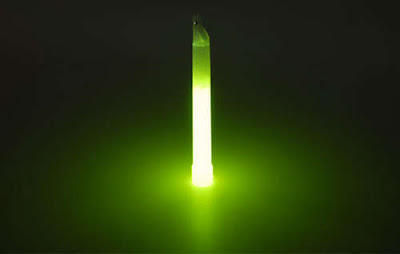How Light Sticks Work
July 28, 2011
A light stick consists of a glass vial, containing one chemical solution, housed inside a larger plastic vial, containing another solution. When you bend the plastic vial, the glass vial breaks, the two solutions flow together, and the resulting chemical reaction causes a fluorescent dye to emit light.
The Activator
We just saw that a light stick is a housing for two chemical solutions, which give off light when they are combined. Before you activate the light stick, the two solutions are kept in separate chambers. The phenyl oxalate ester and dye solution fills most of the plastic stick itself. The hydrogen peroxide solution, called the activator, is contained in a small, fragile glass vial in the middle of the stick.
Heating a light stick will accelerate the chemical reaction, causing the dye to emit a brighter glow. The light stick on the left has been activated and kept at room temperature. The light stick on the right has been activated and placed in scalding hot water for one minute.
When you bend the plastic stick, the glass vial snaps open, and the two solutions flow together. The chemicals immediately react to one another, and the atoms begin emitting light. The particular dye used in the chemical solution gives the light a distinctive color. Depending on which compounds are used, the chemical reaction may go on for a few minutes or for many hours. If you heat the solutions, the extra energy will accelerate the reaction, and the stick will glow brighter, but for a shorter amount of time. If you cool the light stick, the reaction will slow down, and the light will dim. If you want to preserve your light stick for the next day, put it in the freezer -- it won't stop the process, but it will drag out the reaction considerably.
Light sticks are just one application of an important natural phenomenon -- luminescence. Generally speaking, luminescence is any emission of light that is not caused by heating. Among other things, luminescence is used in televisions, neon lights and glow-in-the-dark stickers. It's also the principle that lights up a firefly and makes some rocks glow after dark. To find out more about light sticks, luminescence and related topics, check out the links on the next page.






